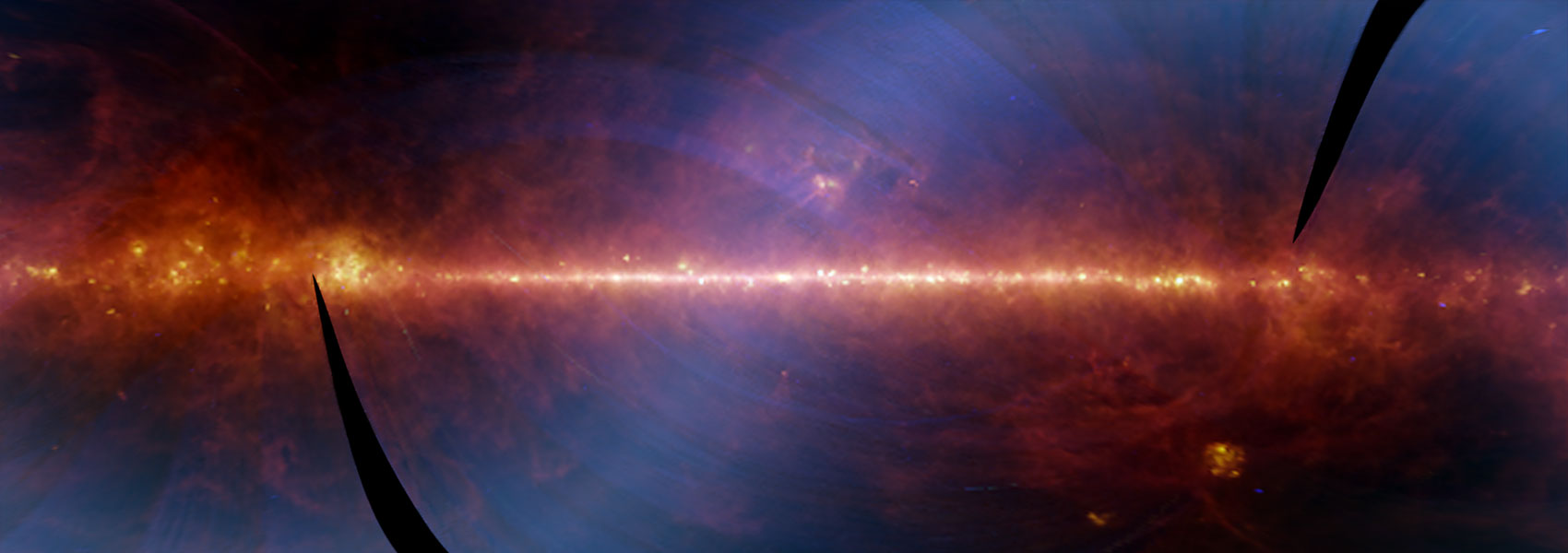September
2020
•
2020ApJ...900....1F
Authors
•
Fujimoto, Seiji
•
Silverman, John D.
•
Bethermin, Matthieu
•
Ginolfi, Michele
•
Jones, Gareth C.
•
Le Fèvre, Olivier
•
Dessauges-Zavadsky, Miroslava
•
Rujopakarn, Wiphu
•
Faisst, Andreas L.
•
Fudamoto, Yoshinobu
•
Cassata, Paolo
•
Morselli, Laura
•
Maiolino, Roberto
•
Schaerer, Daniel
•
Capak, Peter
•
Yan, Lin
•
Vallini, Livia
•
Toft, Sune
•
Loiacono, Federica
•
Zamorani, Gianni
•
Talia, Margherita
•
Narayanan, Desika
•
Hathi, Nimish P.
•
Lemaux, Brian C.
•
Boquien, Médéric
•
Amorin, Ricardo
•
Ibar, Edo
•
Koekemoer, Anton M.
•
Méndez-Hernández, Hugo
•
Bardelli, Sandro
•
Vergani, Daniela
•
Zucca, Elena
•
Romano, Michael
•
Cimatti, Andrea
Abstract
•
We present the physical extent of [C II] 158 μm line-emitting gas from 46 star-forming galaxies at z = 4-6 from the ALMA Large Program to INvestigate C II at Early Times (ALPINE). Using exponential profile fits, we measure the effective radius of the [C II] line (${r}_{{\rm{e}},[{\rm{C}}{\rm\small{II}}]}$) for individual galaxies and compare them with the rest-frame ultraviolet (UV) continuum (${r}_{{\rm{e}},\mathrm{UV}}$) from Hubble Space Telescope images. The effective radius ${r}_{{\rm{e}},[{\rm{C}}{\rm\small{II}}]}$ exceeds ${r}_{{\rm{e}},\mathrm{UV}}$ by factors of ∼2-3, and the ratio of ${r}_{{\rm{e}},[{\rm{C}}{\rm\small{II}}]}/{r}_{{\rm{e}},\mathrm{UV}}$ increases as a function of Mstar. We do not find strong evidence that the [C II] line, rest-frame UV, and far-infrared (FIR) continuum are always displaced over ≃1 kpc scale from each other. We identify 30% of isolated ALPINE sources as having an extended [C II] component over 10 kpc scales detected at 4.1σ-10.9σ beyond the size of rest-frame UV and FIR continuum. One object has tentative rotating features up to ∼10 kpc, where the 3D model fit shows the rotating [C II]-gas disk spread over 4 times larger than the rest-frame UV-emitting region. Galaxies with the extended [C II] line structure have high star formation rate, high stellar mass (Mstar), low Lyα equivalent width, and more blueshifted (redshifted) rest-frame UV metal absorption (Lyα line), as compared to galaxies without such extended [C II] structures. Although we cannot rule out the possibility that a selection bias toward luminous objects may be responsible for such trends, the star-formation-driven outflow also explains all these trends. Deeper observations are essential to test whether the extended [C II] line structures are ubiquitous to high-z star-forming galaxies.
Links




